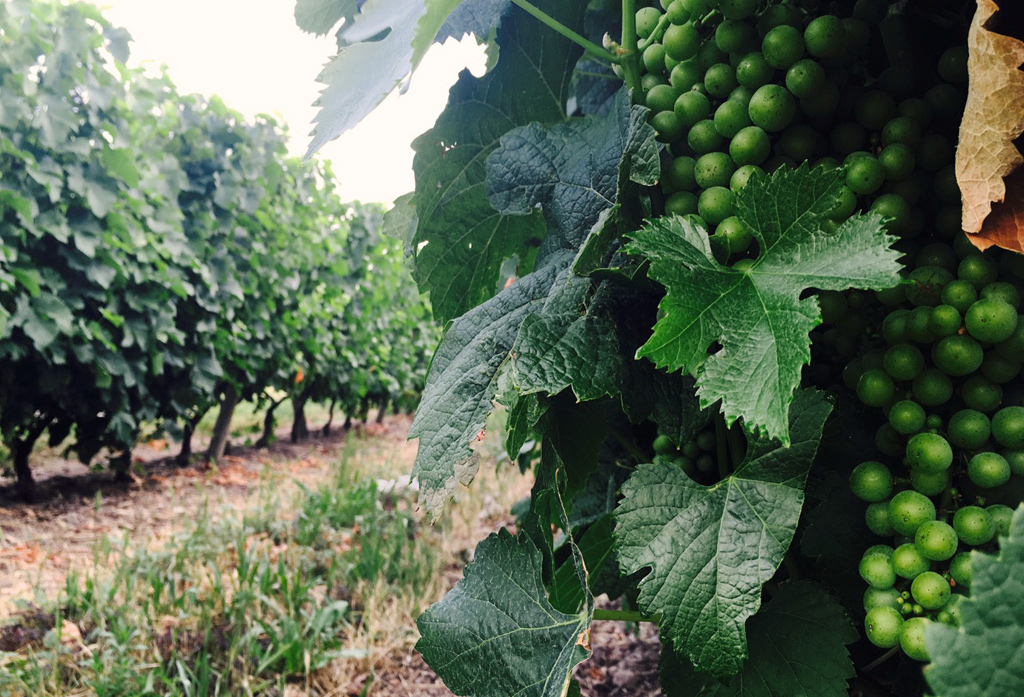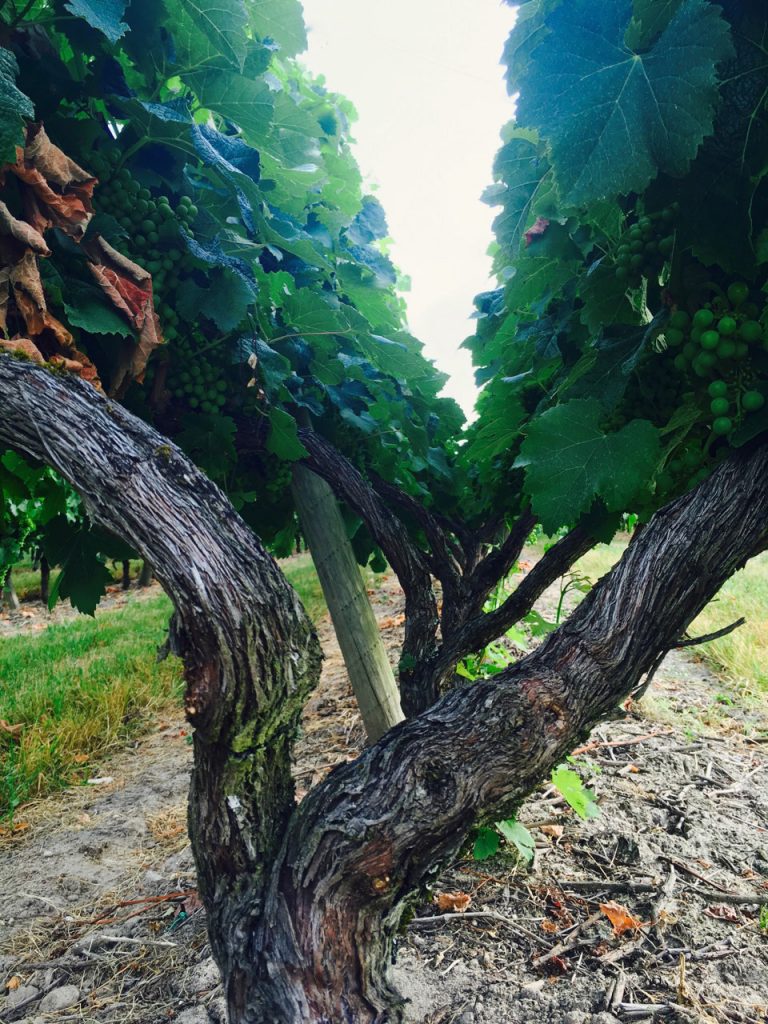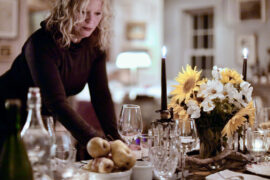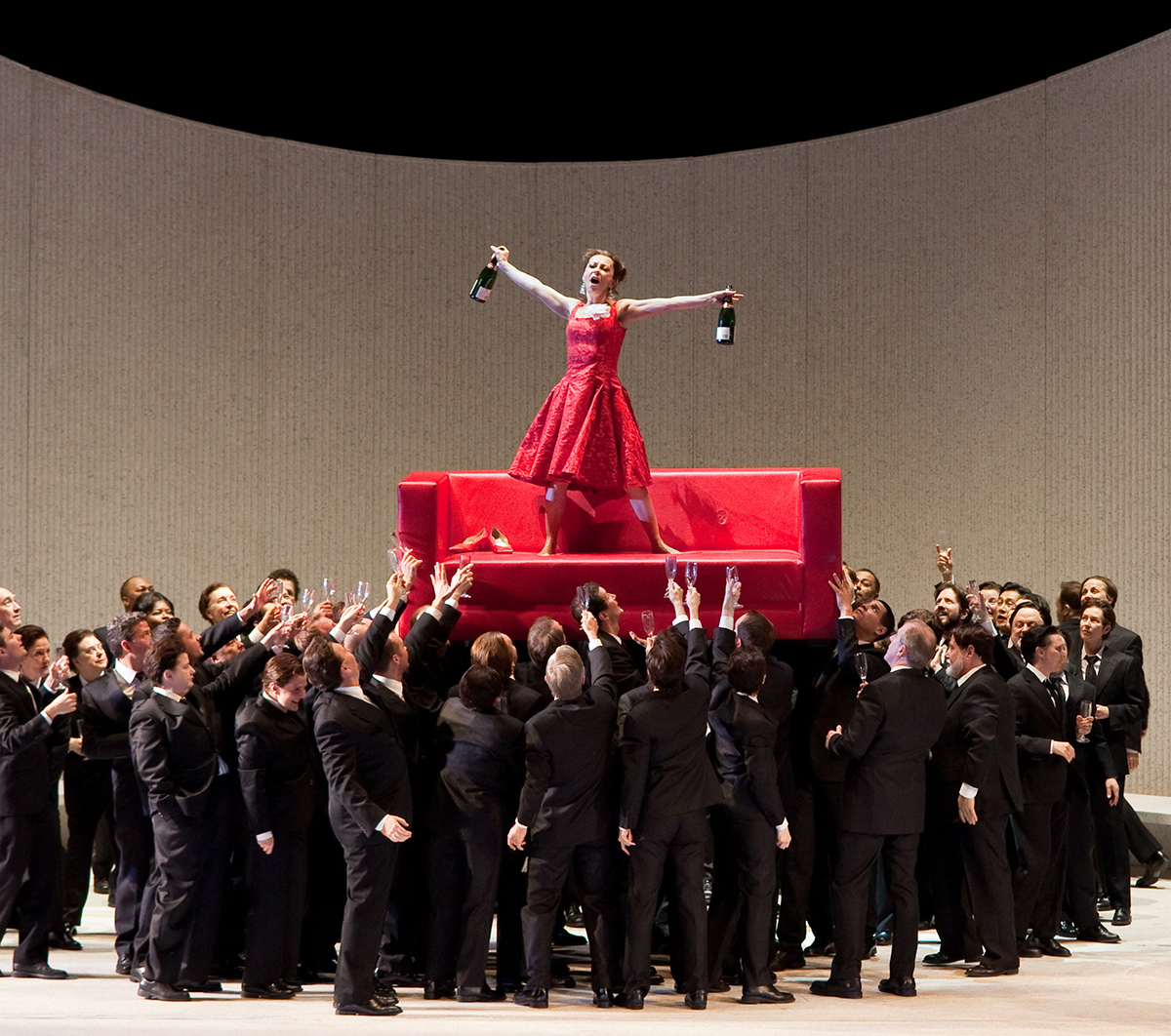
Château Haut Bertinerie, in Blaye Côtes de Bordeaux, deploys a lyre trellis system throughout its eighty hectares of vines. It’s an unusual approach in Bordeaux, where Guyot and double Guyot training are the norm, but it’s one with distinct advantages.
In Bertinerie’s vineyard, rows of Sauvignon Blanc, Merlot, Cabernet Sauvignon, and Cabernet Franc are widely spaced, separated by broad avenues of grass. But within the rows, vines are tightly planted and trained into a Y-shaped trunk, each cordon trellised to one arm of the splayed lyre system.

The approach generates twice as much foliage per vine, which cranks up the solar power to boost sugar levels and yields. This makes lyre trellising a good choice for low-fertility soils; the winery credits the system for adding fatness especially to its Sauvignon Blanc.
Plus, Bordeaux is damp—as these murky mid-day pictures show—and this bilateral trellising allows air to circulate within the canopy. The effect is a boon especially during early summer months, when rains pump up disease pressure.
More air circulation also means less chance of mildew throughout the season, which in turn limits the treatments necessary to control vineyard maladies. That makes the lyre trellis good for the environment, too—and for the viticulturist’s bottom line.
WINES
2015 Château Haut Bertinerie Grand Vin Élegance Blaye Côtes de Bordeaux
Ripe with green flowers and fruits—gardenia, lime peel, lime flesh—carried on a sheet of creamy satin.
100% Sauvignon Blanc
2014 Château Haut Bertinerie Grand Vin Blaye Côtes de Bordeaux
Fermented in new oak and aged eleven months, it’s lush and mouth-filling, with aromas that mingle basil and wet clay, green citrus and white spice. Complicated and citrusy, with a gingery finish, it was the best of tasting.
100% Sauvignon Blanc
2013 Château Haut Bertinerie Grand Vin Blaye Côtes de Bordeaux
Musky Sauvignon character is top-noted by Thai basil, making the wine feel spicy and piquant. Green peels and fruits add juiciness. This would be delicious with Pacific Rim cuisine.
100% Sauvignon Blanc
2010 Château Haut Bertinerie Grand Vin Élegance Blaye Côtes de Bordeaux
A straightforward wine that balances acidity, tannins, and supple, savory fruits. A minty finish adds interest.
60% Merlot, 30% Cabernet Sauvignon, 10% Cabernet Franc
2014 Château Haut Bertinerie Grand Vin Blaye Côtes de Bordeaux
Dense, chewy fruits finish with a kick of pepper. It had been in bottle merely three weeks when I tasted it; give it three to five years to settle down.
60% Merlot, 40% Cabernet Sauvignon
2013 Château Haut Bertinerie Grand Vin Blaye Côtes de Bordeaux
The 2013 is a dark and brooding wine, its black cherry fruit carried on assertive astringency. It needs meat and fat.
60% Merlot, 40% Cabernet Sauvignon
2012 Château Haut Bertinerie Grand Vin Blaye Côtes de Bordeaux
Made from old vines from the best plots of the vineyard. Pink peppercorns, pale herbs, flowers, and sweet cherries ornament lively pink grapefruit refreshment. Yes, this is a red wine.
60% Merlot, 40% Cabernet Sauvignon
All wines were media samples tasted at the winery on 20 July 2016. The Union des Côtes de Bordeaux sponsored my travel.




Thanks. Always good to read about less exalted Bordeaux. There’s lots of good value, but it takes work to find it beyond the classified growth distractions and noise.